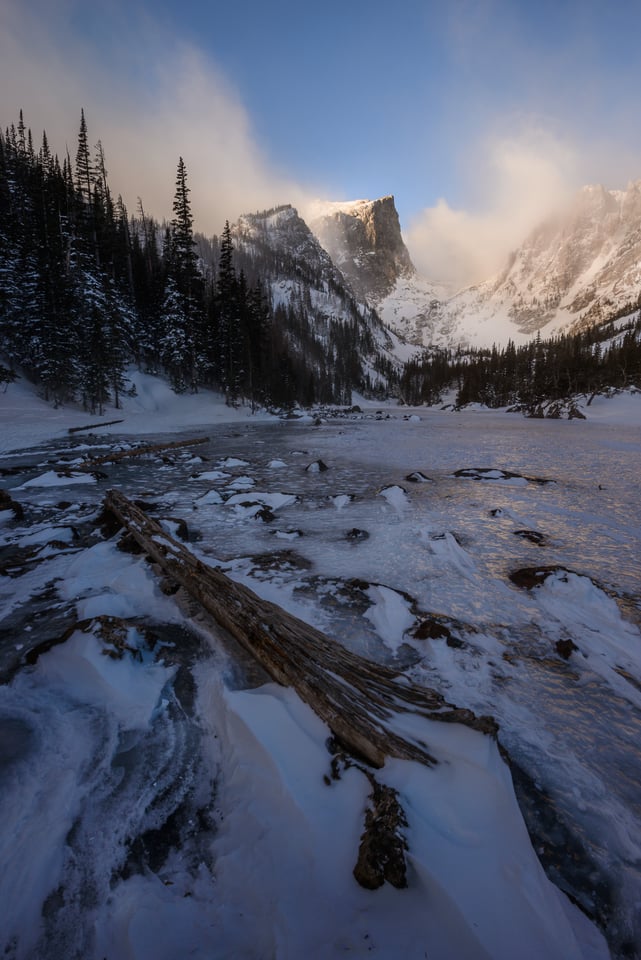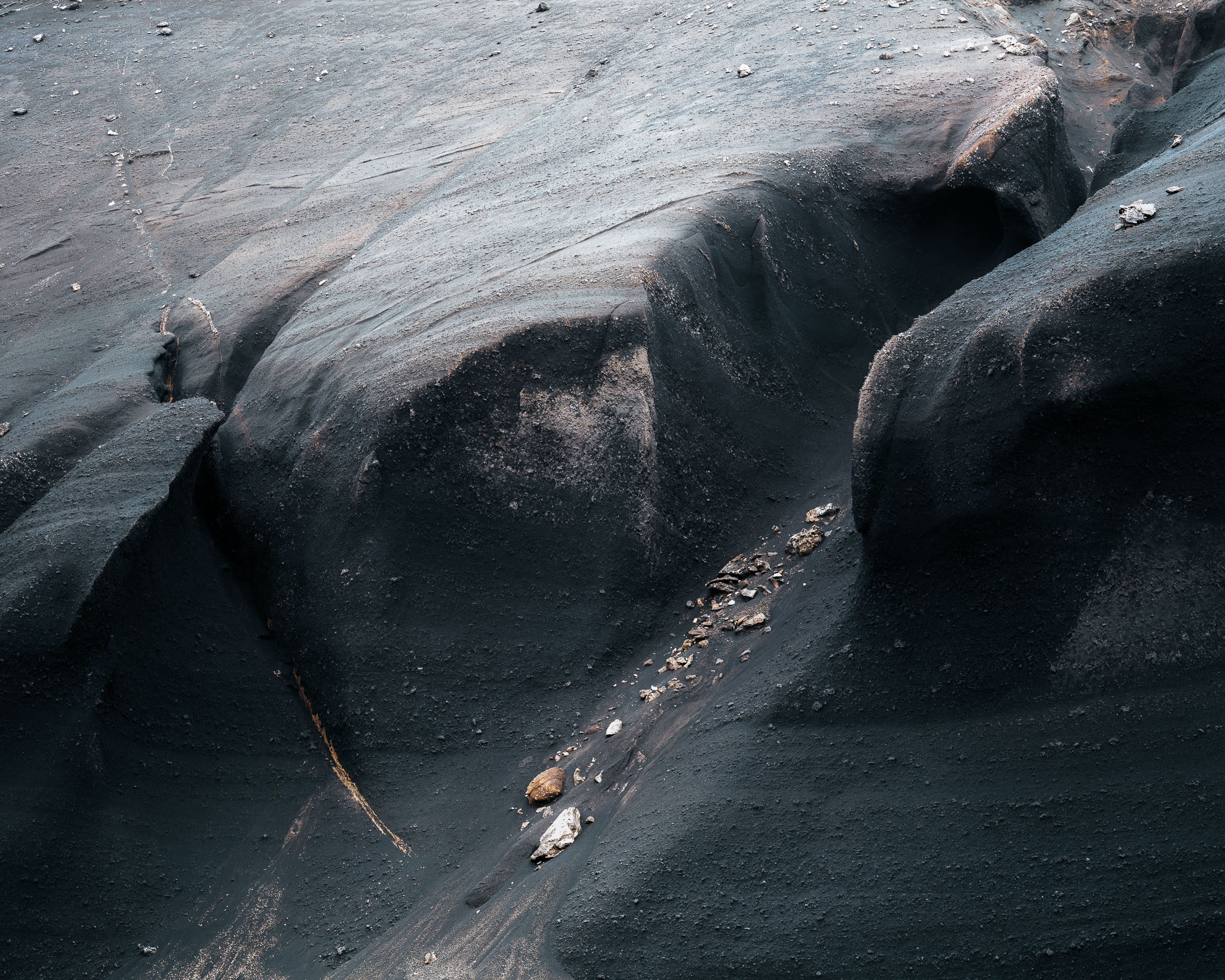Not a lot of foregrounds accomplish what I want them to do in landscape photography. Maybe that’s why I don’t take a lot of classic-style landscape photos with a big, obvious foreground layered in front of the background. But I do still constantly think about finding good foregrounds as a landscape photographer, and it goes without saying that your choice of foreground can make or break a photo. I hope this article sheds a little bit of light on what makes good foregrounds and how to capture them in landscape photography.
 NIKON D800E + 20mm f/1.8 @ 20mm, ISO 110, 1/50, f/7.1
NIKON D800E + 20mm f/1.8 @ 20mm, ISO 110, 1/50, f/7.1In the first place, I should mention that the concept of a foreground means something different depending on the photographer. Whether you define it loosely (anything nearer than the distant background) or narrowly (something that you could practically reach out and touch), the principles I’m discussing today are the same. Simply put, a good foreground is one that complements the story of the photo. I know that sounds vague for now, but I have a few examples to hopefully make things more concrete.
First, here’s an example of what I consider a bad foreground:
 Example of an ineffective foreground
Example of an ineffective foregroundTo me, the silhouetted trees don’t complement the story of this photo at all. I probably included them because I wanted to try to “frame” the distant mountain, but what are they actually adding to the photo? They’re just unrelated trees. Why are they there? What story are they telling? Nothing obvious – they don’t seem to have any connection to the background or the rest of the image. Given the cool shape of this mountain and the colorful light at sunset, I should have looked for a better foreground – or a more interesting composition without a foreground at all – that made the most of the scene. Instead, I just found some random trees and superimposed them on the rest of the photo with little thought. Perhaps predictably, the result is not one that I’m happy with.
By comparison, here’s what I consider an effective foreground:
 Sony a1 + FE 20mm F1.8 G @ 20mm, ISO 100, 1/15, f/16.0
Sony a1 + FE 20mm F1.8 G @ 20mm, ISO 100, 1/15, f/16.0What is the story of this landscape? I think it’s the beautiful, yet alien nature of the scenery here. The vivid orange colors and the fascinating shapes of these rocks are very different from what most of us regularly encounter. I like that you can imagine the rest of this landscape being filled with its own unique patterns and rock formations – what a fun place it would be to explore and look for more oddities like this thin archway. Given all that, I’d say that the foreground here definitely adds to the story of the image. It even puts the background mountains into a somewhat different context and makes you wonder how they might look up close.
Sometimes, you’ll hear the idea of a “leading line” being an example of a good foreground. It drags the viewer’s eye from the bottom of the photo to the top (or vice versa) and gives the composition some structure. I agree – I’ve got nothing against leading lines. But even then, you need to justify their existence in the photo.
Here’s a leading line that I think is not very effective:
 Example of an ineffective leading line
Example of an ineffective leading lineWhy don’t I like the leading line here? Simply put, it’s just a leading line. Where is it actually leading you from? There’s nothing in the foreground to reward dragging your eye into that part of the photo, and the line itself doesn’t have any particular interest to it. If anything, it distracts my eye from the main subject of this photo, which is the peak of Denali looming in the distance. I know that there are good photos to be had of this stunning mountain, but you won’t get there just with any old leading line.
Here’s an example of some leading lines that I think are stronger:
 NIKON D800E + 35mm f/1.8 @ 35mm, ISO 100, 1.3 seconds, f/16.0
NIKON D800E + 35mm f/1.8 @ 35mm, ISO 100, 1.3 seconds, f/16.0This time, the leading lines are dramatic diagonals that guide the eye from the foreground sand dunes to the distant, dusty mountains – all of which share similar angular, harsh shapes. There’s also sand in the air in the distance, so the physical substance of the foreground and background is similar. I find that this photo tells a pretty cohesive story where every part of the composition adds to the whole, and the leading lines draw you across the photo from one area of interest to the next.
I find that in many landscapes, though, the foreground doesn’t obviously complement the background, though. It’s almost an exception to the rule when they do work well with each other. I recommend keeping that in mind when you’re preparing to take a classic foreground/background style of landscape photo. Just because you find something cool both at your feet and in the distance doesn’t mean they’ll go together.
 I think that here, the tree trunk works pretty well as a foreground for a few reasons. First, it’s a similar color as the sunlit peaks, giving some rhythm to the photo. Second, it does act as a leading line that guides the viewer through different interesting parts of the photo. And finally, it adds a little bit to the story of the image, because you can imagine how this tree trunk got here by crashing into the lake and floating to this spot. NIKON D800E + 14-24mm f/2.8 @ 18mm, ISO 100, 1/60, f/13.0
I think that here, the tree trunk works pretty well as a foreground for a few reasons. First, it’s a similar color as the sunlit peaks, giving some rhythm to the photo. Second, it does act as a leading line that guides the viewer through different interesting parts of the photo. And finally, it adds a little bit to the story of the image, because you can imagine how this tree trunk got here by crashing into the lake and floating to this spot. NIKON D800E + 14-24mm f/2.8 @ 18mm, ISO 100, 1/60, f/13.0It’s also very important to consider the size of your foreground relative to the background in order for it to contribute to the photo as best as possible. Focal length and camera position play a big role here. To be specific, a wider lens shrinks the size of the background, while a telephoto makes the background loom large over the rest of the photo. Combine that with some different camera positions, and you can change the relative sizes of the foreground and background to your heart’s content.
I can’t tell you which one – wide angle or telephoto – is going to look better, but they will feel very different. Sometimes it’s better to have an in-your-face foreground (AKA a wide-angle lens and a very close camera position). Other times it’s better to stand back and zoom in so that the foreground is positioned in a different spot against the background. In any case, it’s better to pick your focal length intentionally rather than just leaving it wherever it was for the previous photo.
 Standing close to the foreground at 16mm equivalent
Standing close to the foreground at 16mm equivalent Standing a little farther back at 20mm equivalent
Standing a little farther back at 20mm equivalent Standing even farther back at 27mm equivalent
Standing even farther back at 27mm equivalentAs a final note, I think there’s nothing wrong with a photo that emphasizes the foreground and avoids adding as much interest in the background at all. Photos like that are more like portraits of the foreground! You’re relying on the quality and interest of the foreground to be the subject itself, rather than photographing the relationship between it and the background.
For this type of photo, choosing a good foreground is no different from choosing a good subject in any genre of photography. Try to find something visually interesting or that tells a good story, and see if you can put it under some complementary light. That alone will get you most of the way to a successful photo. Landscape photos don’t need to have a big background in order to be successful!
 Sony a7R V + FE 14mm F1.8 GM @ ISO 100, 1/6, f/16.0
Sony a7R V + FE 14mm F1.8 GM @ ISO 100, 1/6, f/16.0 Chamonix 4×5; Nikkor M 300mm f/9 @ f/32, Kodak E100, warming polarizer, slight front fall
Chamonix 4×5; Nikkor M 300mm f/9 @ f/32, Kodak E100, warming polarizer, slight front fall Mamiya 7 + Mamiya 210mm f/8, Kodak E100, tripod, no filters
Mamiya 7 + Mamiya 210mm f/8, Kodak E100, tripod, no filtersI hope this article gave you some ideas of what to think about when you’re photographing foregrounds in landscape photography. It really all goes back to the idea of a story – yes, finding a foreground with some visual interest, but also making sure that it doesn’t feel too disjointed from the rest of the photo. Ideally, there would be some meaningful relationships between the foreground and the rest of the photo – maybe a similar color or shape, a continuation of the same terrain, or a story-based connection of some kind.
The main idea is to pick a foreground that doesn’t feel haphazard and instead feels purpose-built for the background behind it. Or, if there is no substantial background, the foreground should be interesting enough to be the main subject of the photo. That’s not always an easy task, but it’s one that involves a lot of creativity and self-expression. What more could you want as a landscape photographer?

 2 days ago
2
2 days ago
2


/cdn.vox-cdn.com/uploads/chorus_asset/file/25242409/20230608_Palworld_Screenshot_02.png)



 English (US) ·
English (US) ·